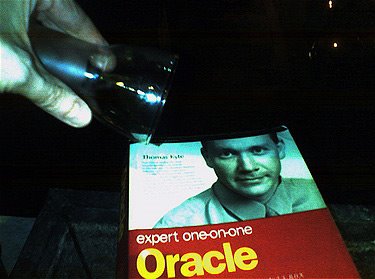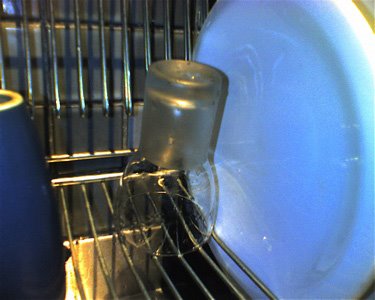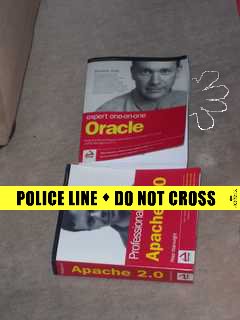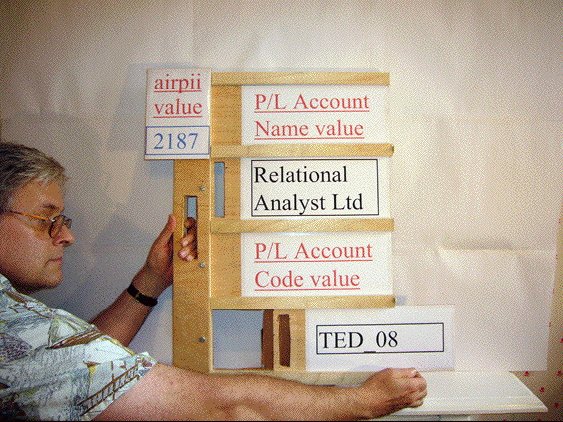We've all engaged in code generation of one sort or another. For certain problems it's just the right, or perhaps the only tool. But then your content management vendor starts to throw this sort of thing at your database...
OPEN p_cursor FOR
'SELECT content_id, content_status
FROM content
WHERE content_type_id = 319
AND content_id IN (
51055 , 45531 , 42208 , 42911 , 46494 , 52898 , 44262 , 44312 , 47474 , 42792 ,
45956 , 45109 , 53432 , 14936 , 29040 , 28779 , 53015 , 48366 , 53739 , 48565 ,
47188 , 46573 , 43038 , 53534 , 51999 , 49731 , 52847 , 43883 , 41522 , 50804 ,
49975 , 45729 , 53260 , 47658 , 41325 , 49454 , 41374 , 45328 , 51612 , 54347 ,
50092 , 48147 , 42416 , 42570 , 49533 , 41948 , 51740 , 52973 , 42648 , 44867 ,
48289 , 45943 , 49556 , 54550 , 46801 , 43628 , 40569 , 41576 , 46752 , 44982 ,
42309 , 45146 , 47198 , 44993 , 47768 , 47060 , 46889 , 45651 , 47045 , 45830 ,
41248 , 54370 , 43741 , 44183 , 28451 , 45094 , 54332 , 47030 , 42060 , 41293 ,
48287 , 48012 , 47740 , 45688 , 43639 , 48484 , 47583 , 45304 , 51478 , 42633 ,
40558 , 43793 , 41587 , 49407 , 28803 , 43272 , 46464 , 45602 , 43866 , 44521 ,
41200 , 48044 , 46927 , 29186 , 45774 , 43722 , 45128 , 43398 , 47397 , 41670 ,
51888 , 47534 , 29237 , 42486 , 53811 , 44704 , 46618 , 48994 , 44848 , 44573 ,
52956 , 44487 , 42435 , 48164 , 43451 , 52031 , 51300 , 52595 , 53141 , 44032 ,
50904 , 41477 , 42161 , 44622 , 52695 , 43838 , 44562 , 45373 , 44882 , 47247 ,
42367 , 50921 , 46265 , 41933 , 48960 , 43143 , 43345 , 28412 , 48868 , 49005 ,
43533 , 46953 , 52420 , 44017 , 49817 , 41490 , 41395 , 43027 , 47703 , 29064 ,
41689 , 50564 , 44112 , 28957 , 29544 , 45223 , 43252 , 49699 , 47356 , 43565 ,
53604 , 45478 , 29422 , 53041 , 45697 , 44054 , 42469 , 44035 , 48750 , 46667 ,
50060 , 46698 , 48306 , 45849 , 45563 , 42452 , 45143 , 46110 , 47800 , 43076 ,
41280 , 45862 , 41657 , 42114 , 47523 , 51841 , 45988 , 48023 , 47307 , 43203 ,
53464 , 44202 , 47984 , 46218 , 45255 , 51412 , 52409 , 47442 , 45932 , 28269 ,
43823 , 46835 , 47785 , 50968 , 46050 , 41916 , 47219 , 51772 , 41980 , 43377 ,
43681 , 50007 , 43072 , 47150 , 45900 , 53376 , 54338 , 45360 , 49086 , 46520 ,
47626 , 29529 , 50321 , 51982 , 53660 , 51644 , 42028 , 41901 , 53269 , 47995 ,
43754 , 49163 , 46069 , 51213 , 53566 , 52304 , 49588 , 51134 , 45167 , 46447 ,
42108 , 45570 , 29439 , 46091 , 44160 , 52227 , 47324 , 42256 , 51262 , 28854 ,
43220 , 41363 , 45272 , 42097 , 46790 , 51102 , 50338 , 44149 , 49849 , 49375 ,
41814 , 44738 , 54211 , 52712 , 54364 , 50283 , 54442 , 46863 , 48687 , 45178 ,
28464 , 44084 , 47615 , 44504 , 50895 , 46231 , 45723 , 47753 , 47230 , 29600 ,
43430 , 28764 , 41619 , 44217 , 43649 , 47502 , 41509 , 47425 , 42873 , 51814 ,
41438 , 44925 , 15364 , 41539 , 50336 , 42777 , 42127 , 44967 , 46942 , 43578 ,
46644 , 48887 , 52748 , 46904 , 42290 , 44000 , 45446 , 45967 , 46539 , 44361 ,
52990 , 45341 , 42326 , 47952 , 49746 , 29512 , 45806 , 50252 , 48121 , 46981 ,
29162 , 41702 , 48700 , 50692 , 49039 , 44689 , 51181 , 42988 , 41737 , 41782 ,
54283 , 44796 , 42667 , 48793 , 42597 , 49195 , 46018 , 48070 , 42975 , 49264 ,
43675 , 29478 , 51000 , 43287 , 49052 , 51589 , 42506 , 44301 , 44649 , 44908 ,
48072 , 50857 , 46020 , 44067 , 42013 , 42091 , 43464 , 48578 , 54015 , 41412 ,
51361 , 52509 , 47124 , 51316 , 44143 , 29724 , 52714 , 44638 , 46142 , 41459 ,
42586 , 43919 , 48945 , 44346 , 49390 , 44822 , 46631 , 43107 , 43591 , 42144 ,
29755 , 43662 , 47540 , 43808 , 45390 , 42223 , 42371 , 42551 , 47918 , 47337 ,
For brevity's sake I'll skip the next 11,000 elements of the IN list.









